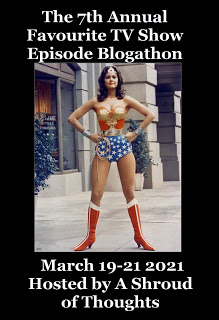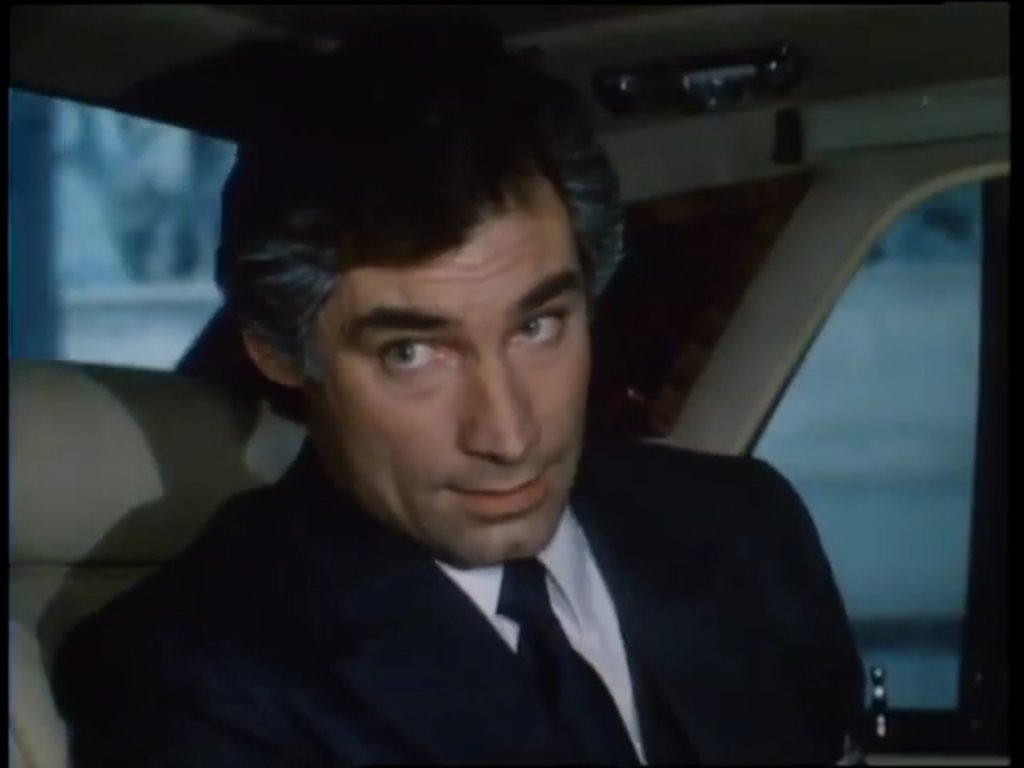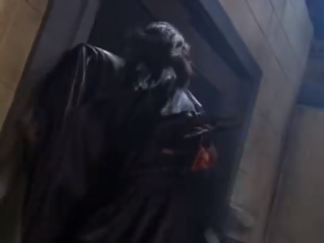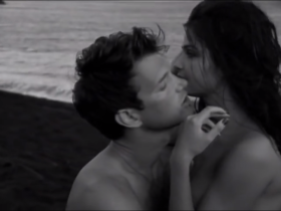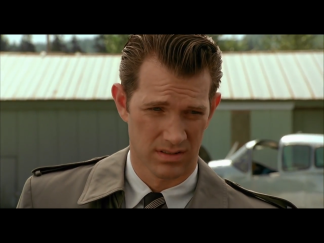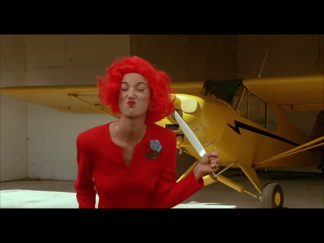
The Ebb Tide (1894) is a novella written by Robert Louis Stevenson and his step-son Lloyd Osbourne. It’s set in the Pacific islands and follows an upper-class dropout called Herrick and his two wastrel companions who are living on the beach in poverty. They take charge of a stricken plague ship with the intention of stealing it and selling its cargo, only to find themselves trapped on a mysterious island ruled over by a religious fanatic. It’s a critique of capitalism, slavery, and christianity. Stevenson died shortly after publication. Osbourne was still alive when the movie went into production.
Synopsis – The Novel
Herrick, an Oxford educated underachiever now ekes out a living in the South Seas. Having given up on life Herrick drifts from port to port in the company of two other unfortunates. Davis, a disgraced sea captain responsible for the ruin of his last ship, and Huish, a criminal and a drunk. Having washed up in a Tahitian port they are penniless and hungry. A schooner carrying a valuable cargo of Champagne arrives in port. Most of the crew have died from smallpox and nobody else will take over captaincy. Davis gets the captain’s job and the trio hatch a plot to sell the cargo and vessel in South America. Once at sea Davis and Huish start drinking the champagne leaving non-seafarer Herrick in charge. Davis is too drunk to pilot the ship during a storm and the ship is badly damaged. Davis sobers up, but their plans to profit from the ship’s cargo are foiled when Huish discovers only the top bottles in every crate contain champagne. Davis realises the ship’s previous owner was planning to sink the ship and claim the insurance money.
Drifting, they spot a small island and sail towards it. The island is owned by an extremely tall and powerfully build Englishman called Attwater. Smallpox has decimated the Native population leaving only Attwater and a handful of Natives. Attwater makes his living diving for pearls and has amassed a fortune. He is also a deeply religious man and expects the same devotion from others. Attwater is quite open with the visitors and strikes up a bond with Herrick. Davis and Huish want to kill Attwater and steal his pearls. Attwater seems aware of their intentions and quickly gets the truth out of Herrick. Attwater’s religiosity has a cruel streak and Herrick is terrified. At dinner Attwater tells a story about killing a thief who framed an innocent man for his crimes and caused his suicide. Herrick brands Attwater a murderer. Finally plucking up the courage to kill himself Herrick tries to drown himself but fails. Huish’s attempt to murder Attwater by throwing acid on him backfires when Attwater shoots the jar containing the vitriol setting his attacker alight. Davis begs for mercy and is forgiven by Attwater who demands he repents his sins. Davis undergoes a religious awakening and becomes Attwater’s acolyte. Herrick’s existential crisis has deepened after his experiences on the island and he decides to leave.
Ebb Tide – The Movie
Ebb Tide (1937) is an early Technicolor film by Paramount Studios starring a young Ray Milland as Herrick, Oskar Homolka as Davis (here renamed Therbecke), and Frances Farmer as a new character Faith Wishart. Irish actor Barry Fitzgerald murders the cockney dialect as the vicious little criminal Huish. Lloyd Nolan plays the sinister Attwater. Bertram Millhauser adapted the novel into a screenplay and journeyman director James P. Hogan directs The film follows the essential narrative of Stevenson and Osbourne’s novel but makes a few changes that alter the overall tone of the piece. There’s not a lot of information about the film and the lack of availability now suggests it was not a success back in the day. For years it was difficult to find until a copy was uploaded to YouTube a couple of years ago. As you can tell from the screen-grabs it’s in dire need of restoration. Overall it feels like a second feature designed to try out potential stars. Paramount advertising from 1937 showcased Frances Farmer over Ray Milland calling her the new star of the season which is ironic as there is barely any female presence in the novel.
ON THE BEACH

Screenwriter Millhauser has a difficult job adapting this novel. Unlike Treasure Island there’s not much action, and while Stevenson and Osbourne can go into depth about Herrick’s emotional state it’s a lot harder to show onscreen without using voice-over. Film can use montage though to convey information quickly through a series of images and Hogan establishes the idyllic nature of the island for those rich enough to enjoy it and its status as a French colony. This contrasts with the fortunes of Herrick and co who are first seen watching a fancy couple eating a slap up meal on the verandah of a restaurant. They are “on the beach.” A phrase meaning persona non grata, destitute, and living off the scraps they can find.

The early part of the novel has a lengthy sequence in which the trio reveal more about themselves including their real identities which up until now they have kept secret from each other. In the film this moment is whittled down to them each sharing something they’d like to do if they were back at home. Their choices are abridged versions of longer stories told in the novel. Herrick telling of a dream where he walked through he streets of London and found himself facing the door of the woman he loved, Therbecke returning home to his family with gifts, and seeing his daughter Ada again, Huish wanting something to drink. The big revelation though is Therbecke revealing he’s the disgraced Captain of the Sea Ranger, a ship which went down with all souls onboard save for his. Huish has heard the name and as soon as it’s uttered the heavens open and rain thunders down upon them as if the natural world is turning against them.
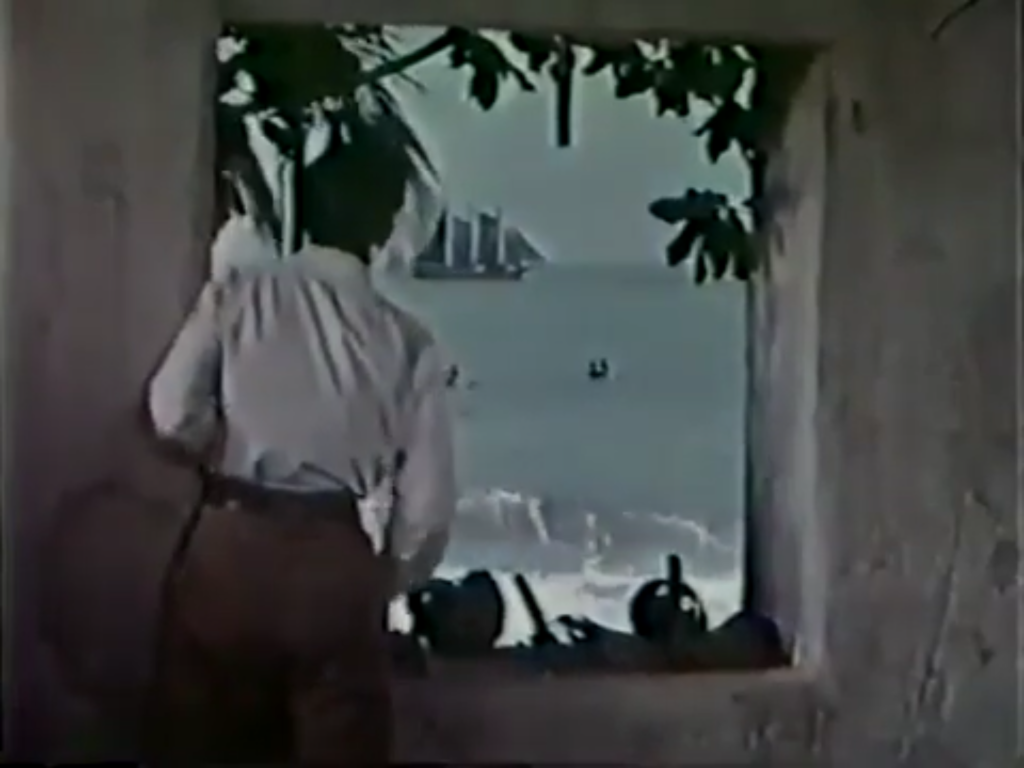
Their way of the island arrives in the form of a schooner flying a yellow flag, a maritime signal for a medical emergency onboard. The French are presented as comic caricatures with the doctor pratfalling into a rowing boat, and the governor gesticulating wildly and talking in an exaggerated Clouseau accent when he discovers a plague ship has dared to enter his waters. In the novel Davis is brave enough to offer assistance to the island’s doctor who must board her and finds the bodies of the Captain and his mate who have been ravaged by smallpox. Here Therbecke stays ashore and tries to cadge breakfast from a ship, but in an exchange taken directly from the novel the ship’s Scottish captain send them packing. “I’ve heard tales of you three.” In the novel Herrick is so upset by this encounter he leaves the others and makes a half-hearted attempt at slashing his wrists. Ray Milland is cast as a more conventional Hollywood hero, offering to teach the captain some manners even though they are clearly in the wrong. Therbecke is taken away by the authorities after the incident and Herrick and Huish both assume he’s under arrest, but he returns with food and beer and a commission to captain the Golden State to deliver its cargo, once it’s been fumigated.
ALL AT SEA

Once they are safely at sea Therbecke makes plans to re-direct the Golden State towards Peru where they can sell the cargo. Herrick is against the idea but goes along with it when he hears the true story of the Sea Ranger. Therbecke was incapacitated by drink when the Ranger went down and he it to blame for the deaths of passengers and crew. With no papers he can never captain a ship again. For him there is only another beach to live off, wherever he ends up. Then comes the wild card, the addition of Frances Farmer as Captian Wishart’s daughter.

A new addition from the book, Faith Wishart has been hidden onboard by the crew who remain loyal to her. Herrick’s internal monologue in the novel is often directed towards Emma, or rather the version he’s created of her in his own mind. “Be done with the poor ghost that pretended he was a man.” Here Faith functions as his conscience, as well as becoming a conventional Hollywood love interest. The type the Herrick of the novel, a timid sort whose defining characteristic is a physical and emotional weakness would never encounter. There are hints about Herrick’s upper-class background mentioned in the film, notably Huish confronting him and asking what a man like him could have done to end up here, but this is never answered. The novel opens by telling us Herrick abandoned his position as a clerk in New York and headed for the Pacific Islands because it seemed like the best place to destroy himself completely. “Let it be a pleasant failure.”

The rest of the ill fated sea journey follows the novel. Huish begins to sample the cargo and tempts Therbecke to fall off the wagon. There’s a nice touch when Therbecke forcibly takes a bottle from the drunken Huish and slams it down on a table, only for the champagne to bubble up and pour over the captain’s hand. It’s not long before he’s joining Huish in drunken singalongs and worse still he’s got an accordion from somewhere. The storm when it hits is beautifully rendered by old-school Hollywood set-design and stunt-work as the full-sized model ship is battered by waves of water. Afterwards Therbecke sobers up and reveals the truth about his family. They’re all dead, even little Ada. The discovery of the mysterious island, spotted by a lookout, but not mentioned on any map. There is one change. Huish discovers a large jar of vitriol, an explosive liquid akin to acid which Wishart was going to use to sink the ship. In the novel the thuggish Huish has carries a small jar of this in his belongings.
ON THE ISLAND

In the novel they observe the island from onboard the ship. Attwater, a tall impressive figure of a man over 6’5″ in height and wearing a white suit rows out to meet them. He’s polite and asks them all to dinner, but really he’s sizing them up. Herrick he recognises as being an educated man and invites him to meet him on the island before for a chat. Stevenson’s stories often feature a strong bond between protagonist and antagonist that makes them more than mere adversaries. Spiritually lost, Herrick is drawn to Attwater’s charisma and listens intently as he’s shown the island. Gradually though Attwater’s religiosity begins to unsettle Herrick with its intensity. Despite their shared background and their status as exiles, they are very different. Herrick believes in nothing not even himself, while there is no doubt present in Attwater. Like many of his class Attwater believes he was born to rule, and like the Old Testament God he worships he would offer forgiveness as easily as he could strike somebody down.
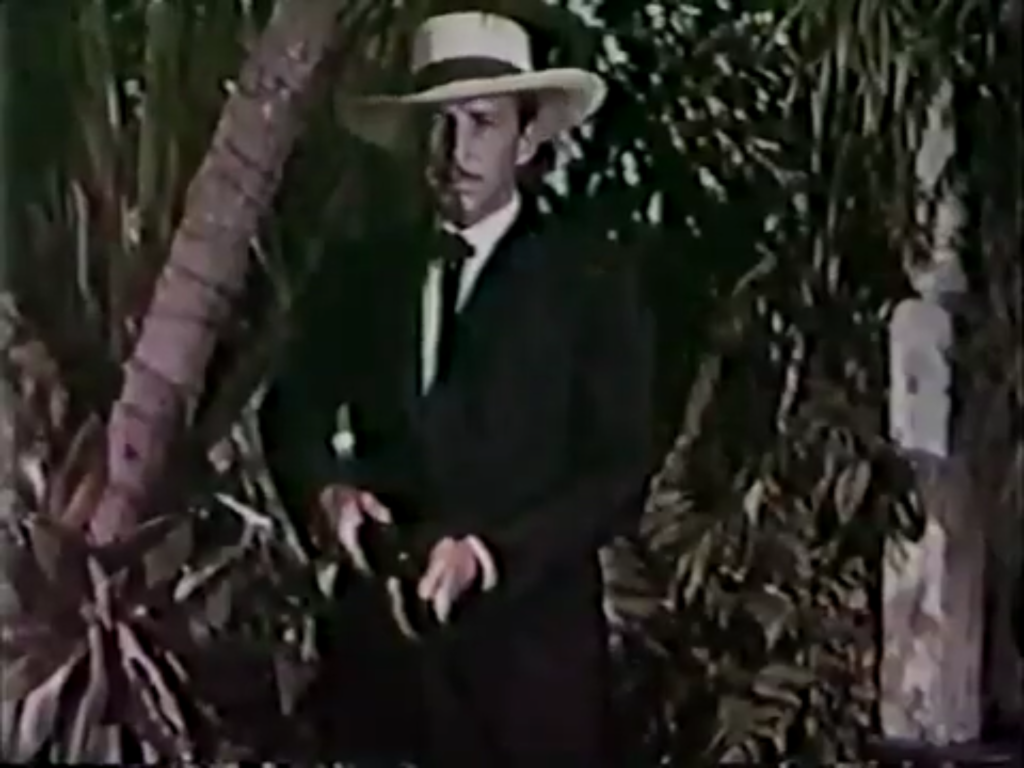
In the film there are a few differences that alter the tone of the story from its source. Firstly the presence of Faith Wishart means Herrick has somebody to care about and protect. There is only a brief conversation between Herrick and Attwater and the latter’s Christianity is played down with only a mention of “infinite grace” making sound more overtly crazy than in the book. Attwater’s appearance is more devilish, dressed in black with a warlock’s beard, he looks like a bad guy right from the start. The dinner party which functions as a war of wits between the host and his guests is taken almost word for word from the novel including the anecdote about killing one of the natives, but while Herrick reacts with the same outrage he does not try to drown himself afterwards. Huish’s attempt to murder Attwater does indeed end with him being burnt alive by liquid hellfire and is surprisingly graphic for a film made only 3 years after the Hays code came into effect. Therbecke gets a nobler send off than Davis begging for his life and becoming a convert to Attwater’s religious mania. Instead Therbecke stares down Attwater and insists “I don’t beg” before being shot and joining little Ada in death. In the novel Attwater, the imperialist who’s made a fortune by exploiting another culture wins. Here he’s left to live alone in perpetual disgrace on his island, while Herrick and Faith recruit the natives as crew and sail off into the sunset. A true Hollywood ending with everything resolved and no uncertainty, unlike the novel which leaves Herrick as lost as he was at the beginning of the story.
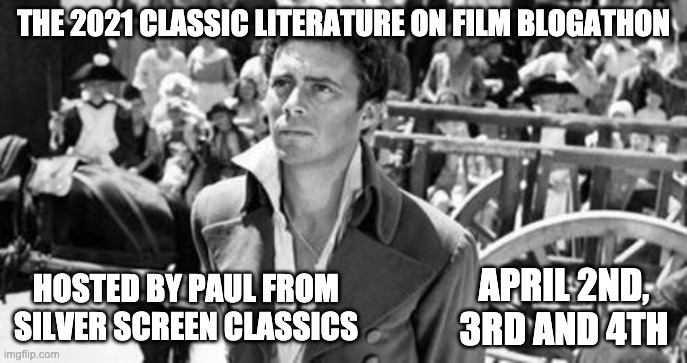
Many thanks to Paul at Silver Screen Classics for letting me contribute to the 2021 classic literature blogathon.















